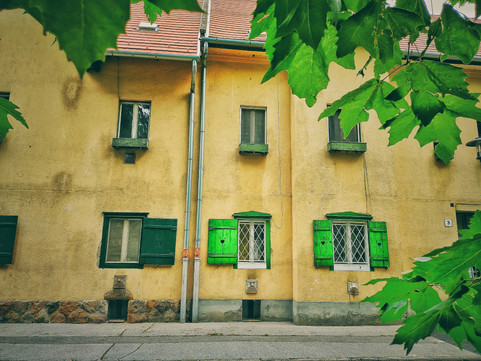
Currently, it can be said that safety has became the main interest in the field of travel. Until now, we travelled prioritising a completely different list of factors, price-value ratio, cheap plane tickets, climatic factors, sights, these were the primary aspects, based on which we settled on where would we go. For now, these have been completely overridden and we have to put safety factors above all other seemingly important criterion. According to all these, besides its other merits, Budapest attracts tourist due to its low infection rate of the COVID-19. Also unneglectable the fact that Budapest is full of places waiting to be discovered, omitted from the tourist-books, some of them would maybe surprise even the residents.
1. Építészpince (Buildercellar), Ötpacsirta street, Palace quarter
As you unhurriedly roam through the Palace quarter’s architectural masterpieces, you curiously look into a doorway and glimpse the Tuscan paradise itself. The walls are covered in ivy, in the middle a little square made from mosaic pieces, in the square, some small table, chairs, railing, reminiscing the old times, statues, staircases, the Secret Garden itself unfolds in front of you.
It is worth come there, even only for a coffee to admire every part of this fascinating court.
2. Ponty street, District I.
The staircase on Ponty street is just one of the many which lead to the Buda Castle, but arguably the most picturesque of them, the high tenement houses flanking it, the wrought iron fence, all give the feeling as we were taking our everyday walk between the castle and our home in a historical film.
3. Gül Baba Street, District II.
Gül Baba street is catching on, perhaps this is the one of the many interesting things, that many have already heard of or even have been there. Gül Baba – meaning the father of roses – was a dervish poet, who in accordance with his rank, “rose” in his name, knew God on a deep, transcendent level. According to the legend, he died on the ceremony in honour of Buda, later I. Suleiman declared him the patron saint of Buda. The türbe (tomb) of Gül Baba including the garden around it is an unparalleled historical memory, which is a symbolic memento of the Hungarian-Turkish relationship
4. Gas Factory Residential, Óbuda
One of the biggest industrial plant then, the Gas Factory in Óbuda was opened in 1914 and it operated until the 1984s and supplied Budapest with the gas extracted from coal. The Gas Factory built a residential park to the workers and officers near their workplace, these houses were represented high standards compared to the capital’s conditions, since the Gas factory respected its workers. The only demand was to work neatly and keep the house tidy, a prescription was for example to have a red geranium in every window (this habit is also kept today by some).
The residential park was practically in the city (it’s still like that) and the workers was provided every service they needed: post office, shops, shoemaker, pharmacy, doctor’s office, school and even a casino, where the annual Gas Factory balls were held.
Being a worker of the gas factory and the residential of the residential park was a privileged position then. The descendants of the workers still live in the park as surprisingly converging community.
The residential park can be divided into two parts: the one which was closer to the factory was the workers home, while in the inner part lived the leaders in a higher position or the technicians.
Walking there cause a feeling like we weren’t in Budapest, but in another small city, where the buildings are surprisingly similar, the frontages are uniformly yellow and the window shutters are green. For a long time I didn’t know about the existence of this residential park, it’s worth to visit for a refreshing walk.

































Comments